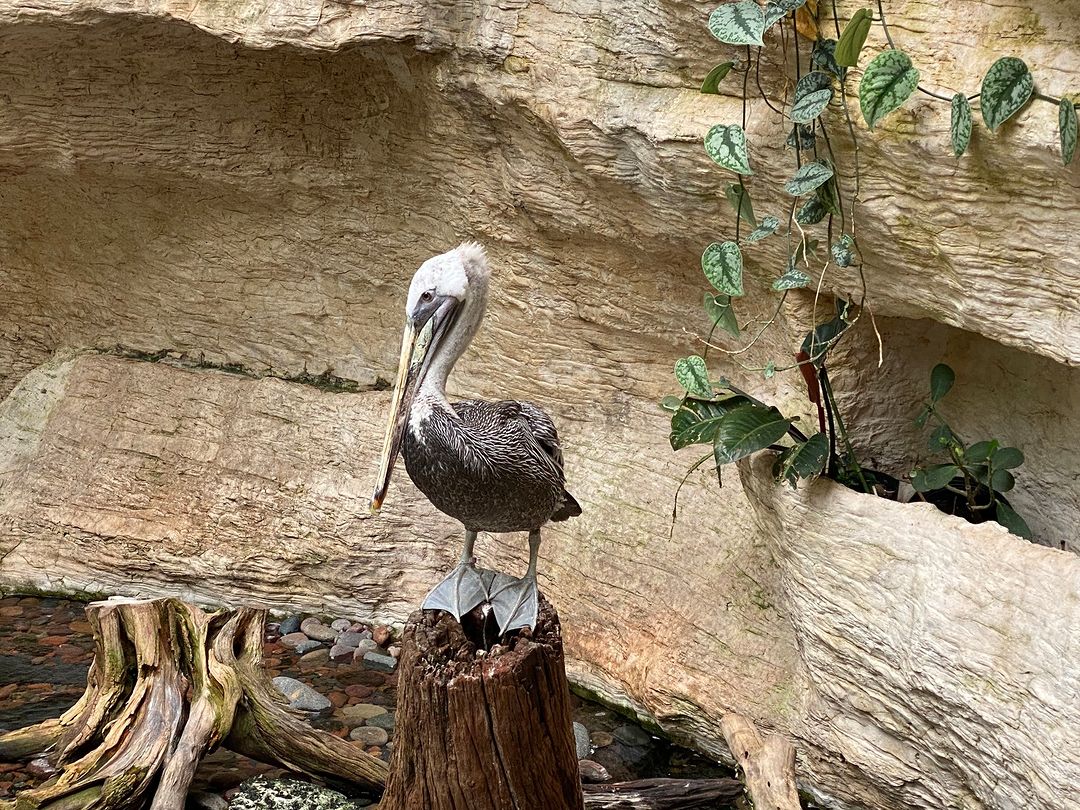Summary:
– Brown pelicans can be found in the United States, Mexico, and Central America coastal areas.
– Their unique hunting style involves diving into the water to capture fish using their stretchy pouches.
– DDT and other pesticides threatened their population in the past.
– Preservation efforts have helped them recover from the brink of extinction.
The coastal areas of the United States, Mexico, and parts of Central America are home to one of the most fascinating and unique creatures – the Brown pelican. With their remarkable hunting style and incredible recovery from the brink of extinction, these magnificent birds have captured the attention and admiration of nature enthusiasts worldwide.
One of the most striking aspects of Brown pelicans is their hunting technique. When catching fish, they have perfected a diving strategy that leaves spectators in awe. Imagine soaring high above the water, scanning the surface for any sign of their prey. Once they spot a fish, they fold their wings and plunge into the water headfirst with lightning speed. But what sets them apart is their stretchy pouches that come into play during these dives.
As the pelican dives, its pouch expands to create a net that ingeniously traps fish within its grasp. This stretchy pouch can hold up to three times more fish than the bird’s stomach, allowing it to return to shore with a bountiful catch. This hunting style is practical and a spectacular sight to behold, showcasing the incredible natural adaptation of these coastal dwellers.
However, it wasn’t always smooth sailing for the Brown Pelicans. In the 1940s, their population faced a significant threat due to the use of pesticides in agricultural practices. One such pesticide was DDT, which entered the aquatic ecosystem through runoff and contaminated the fish that served as the pelicans’ primary food source. As the pelicans consumed these contaminated fish, the pesticide accumulated in their bodies and caused devastating effects.
The consequences of DDT were disastrous for these magnificent creatures. The pesticide affected the reproductive abilities of the pelicans, leading to thin eggshells that were prone to breakage. This, coupled with the direct toxicity of DDT, resulted in a sharp decline in the Brown pelican population. They were on the verge of extinction, and urgent action was needed to save these remarkable birds.
Fortunately, preservation efforts came into play, and organizations dedicated themselves to conserving the Brown pelicans. The ban on DDT in the United States in 1972 was crucial in protecting these birds and their habitat. Other measures, such as habitat preservation, restoration, and nest protection, were also implemented to ensure their survival.
The results of these efforts have been nothing short of miraculous. The Brown pelican population made a tremendous recovery, bouncing back from the brink of extinction. Seeing these birds soaring along the coastlines, their graceful flight and precise dives is a testament to the power of preservation and the resilience of nature.
Today, these once-threatened birds are considered success stories in conservation. Their recovery serves as a beacon of hope and inspiration, reminding us of the importance of protecting our natural world. It is a testament to what we can achieve when we recognize the value of every living species and take action to preserve their habitats.
The United States, Mexico, and parts of Central America continue to be vital strongholds for these fantastic creatures. Their conservation serves not only to protect the Brown pelican but also to safeguard the rich biodiversity of our coastal ecosystems. By acknowledging and appreciating these birds’ unique and fascinating aspects, we can foster a greater understanding and love for the natural world.
So, the next time you stroll along the coast, keep your eyes peeled for the remarkable sight of Brown pelicans soaring through the sky. Take a moment to marvel at their adaptive hunting style, their stretchy pouches, and their incredible recovery from the brink of extinction. Let these majestic creatures remind you of the importance of conservation and the wonders that await us when we strive to protect and preserve our natural heritage.
*****
Source Description
The United States, Mexico, and parts of Central America are some of the coastal areas where Brown pelicans can be found. Their remarkable hunting style involves seeing their target from above, folding their wings, and plunging into the water to capture fish in their stretchy pouches. DDT and other pesticides posed a significant threat to them in the past, leading to a population decline in the 1940s. However, thanks to preservation efforts, they have made a miraculous recovery from the brink of extinction.


